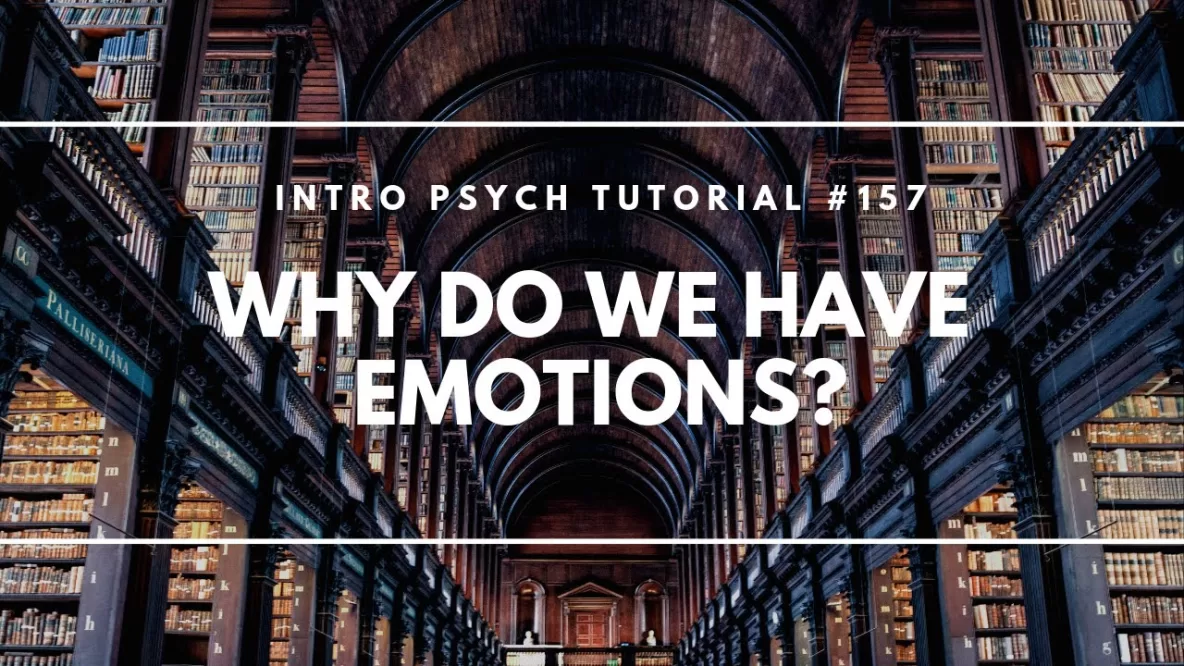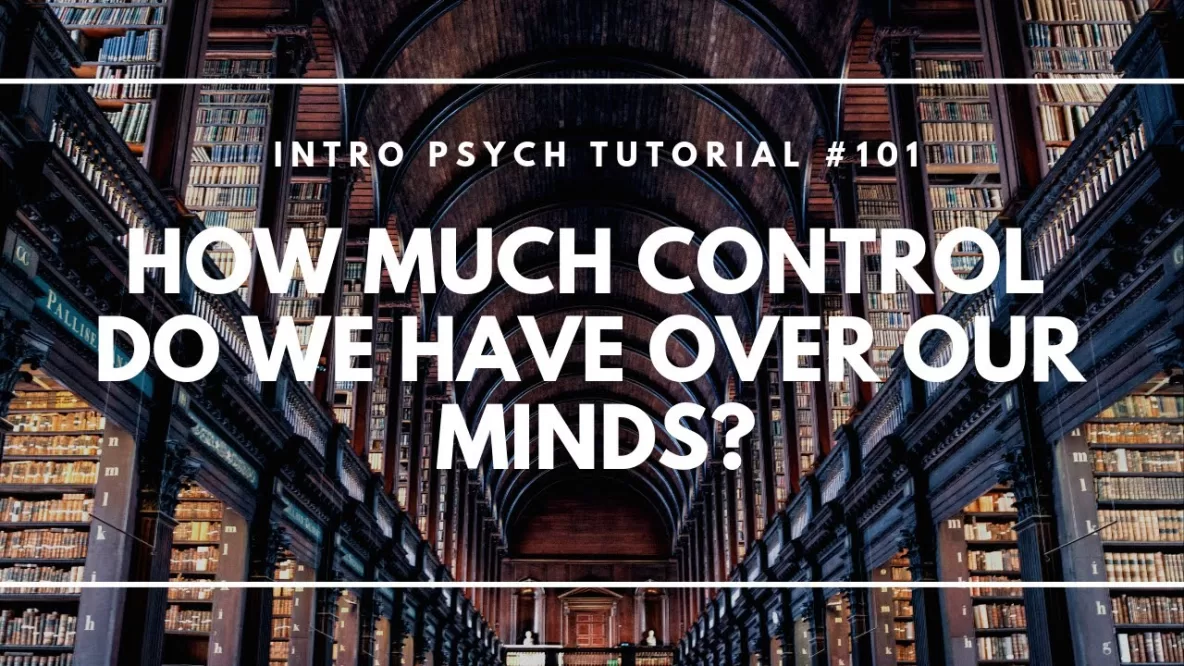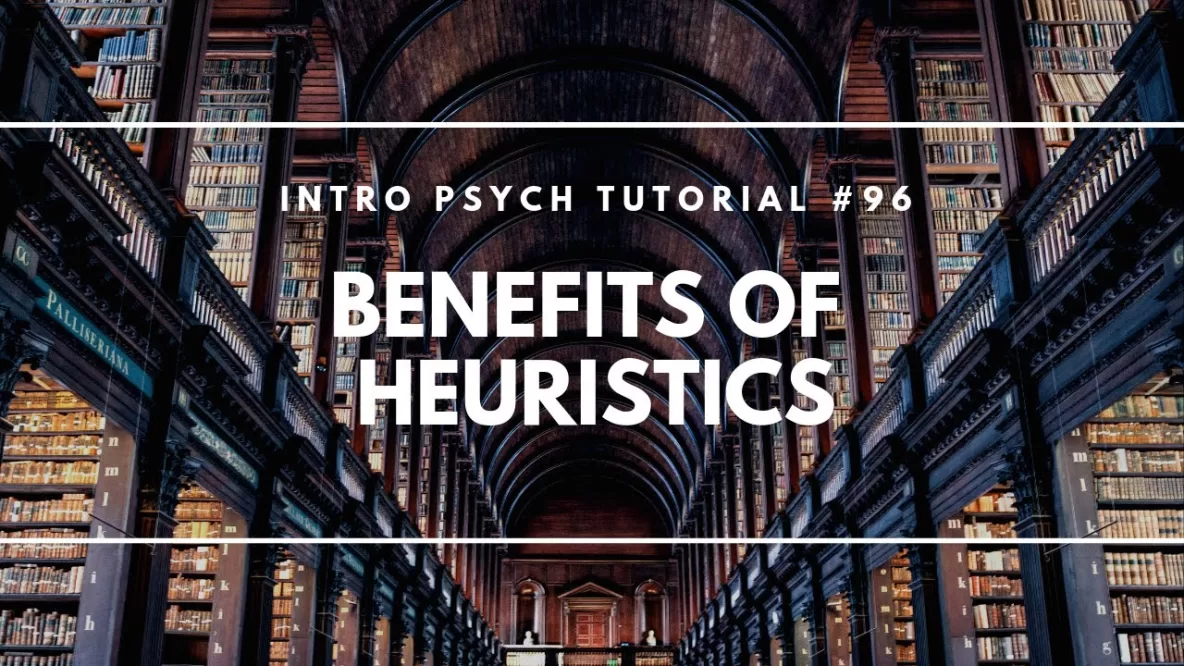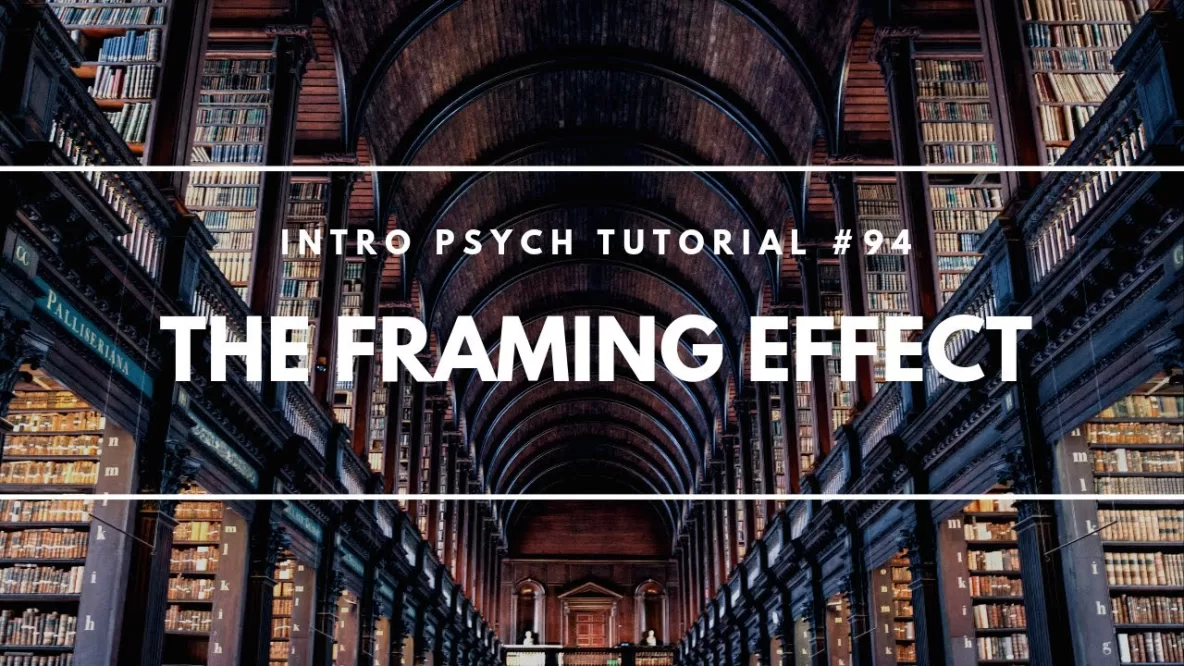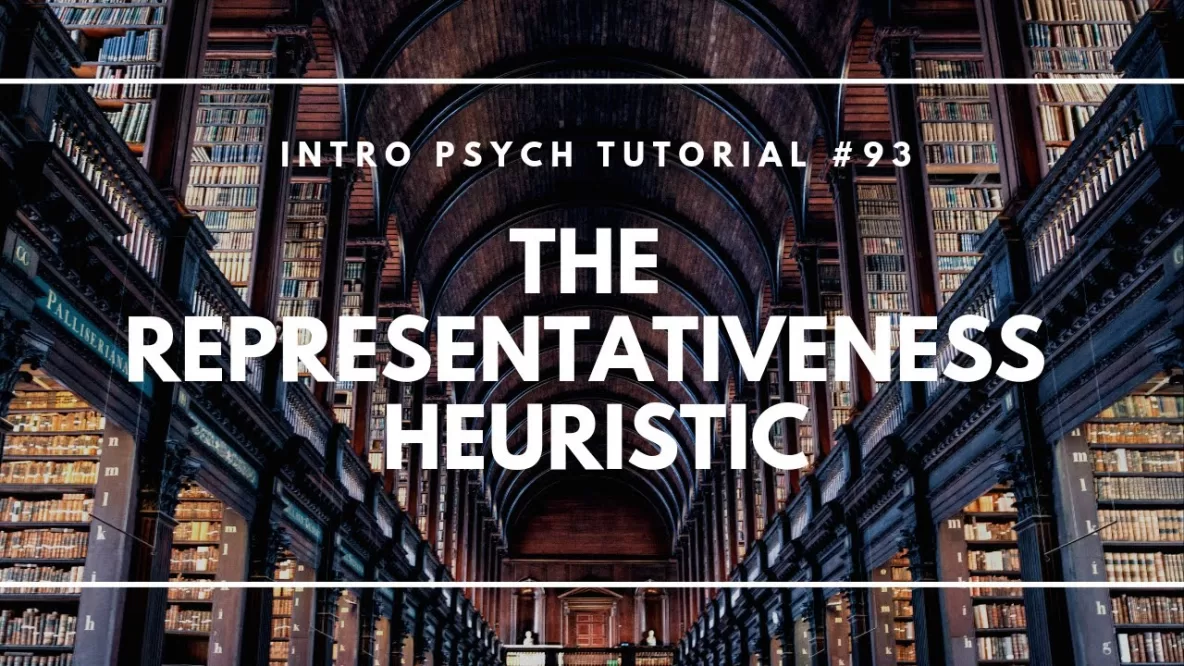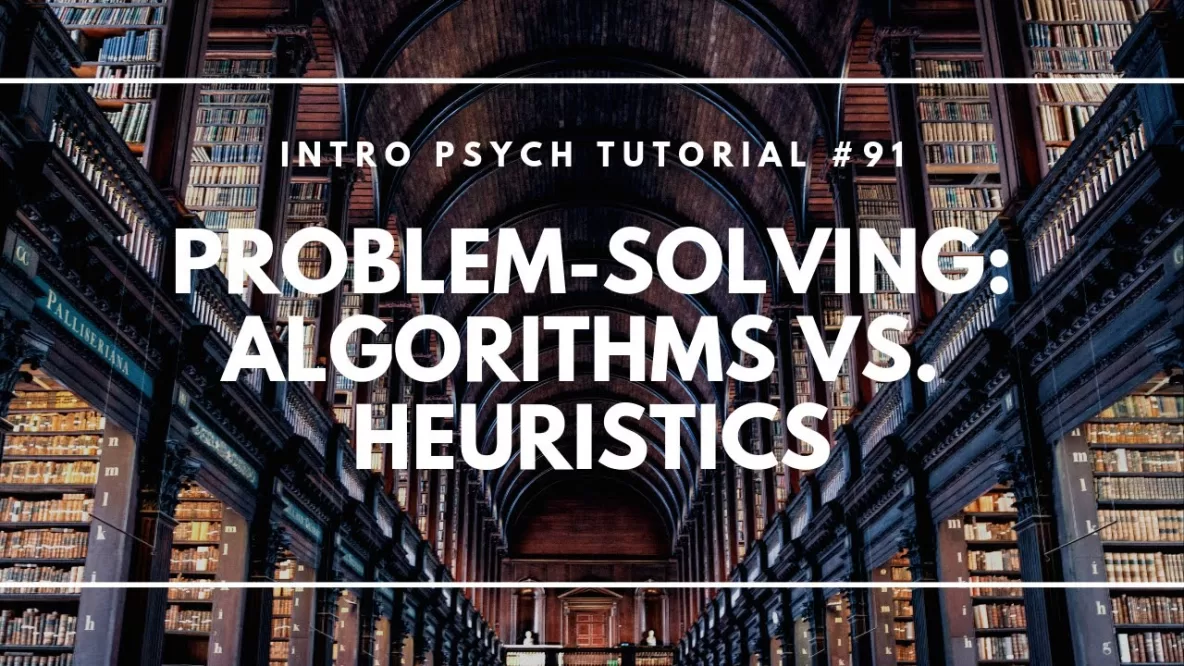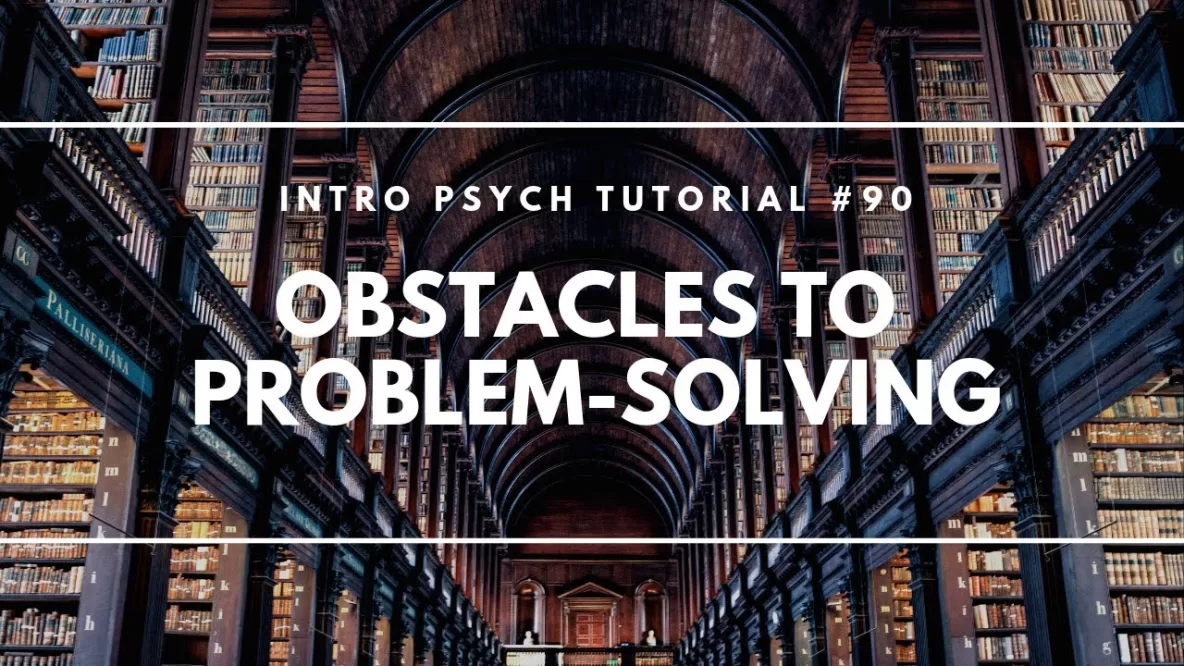In this video I discuss why we have emotions and how they play a role in our assessments of good and bad, our decision-making, and even our perception. I describe the hedonic principle, Antonio Damasio‘s patient Elliot, and the rare condition of Capgras Delusion. Descartes’ Error – Antonio Damasio (Amazon): … Read More
How Much Control Do We Have Over Our Minds?
In this video I consider how much control we have over our own minds. We may not have as much control as we think and this can be demonstrated in ironic processes of mental control as well as unconscious processes. While exploring this question, I introduce thought suppression and counter-intentional … Read More
Benefits of Heuristics
In this video I end the unit on cognition with the reminder that heuristics are not just about making errors in decision-making. Most of the time heuristics work well and they serve as useful tools for making sense of the world and being able to make decisions with limited information. … Read More
The Sunk-Cost Fallacy
In this video I introduce the sunk-cost fallacy, which is when we make present decisions based on previous investments which aren’t relevant. This fallacy can occur in the form of gamblers or investors who make increasingly risky decisions in order to make up for past losses. Tversky and Kahneman have … Read More
The Framing Effect
In this video I introduce Tversky and Kahneman’s work on the framing effect and how consideration of benefits or losses can influence the choices that people make and their willingness to take risks. I consider a few everyday examples of this, then consider how the framing of default options may … Read More
The Representativeness Heuristic
In this video I describe another heuristic identified by the work of Amos Tversky and Daniel Kahneman. The representativeness heuristic is a shortcut that we use when attempting to estimate the odds of something being true, such as whether an interview profile came from a lawyer or an engineer. Rather … Read More
The Availability Heuristic
In this video I provide an introduction to behavioral economics and the work of Amos Tversky and Daniel Kahneman by describing a heuristic we use when attempting to assess the frequency of events. The availability heuristic is a shortcut that estimates frequency based on how available an event is to … Read More
Problem Solving: Algorithms vs. Heuristics
In this video I explain the difference between an algorithm and a heuristic and provide an example demonstrating why we tend to use heuristics when solving problems. While algorithms provide step-by-step procedures that can guarantee solutions, heuristics are faster and provide shortcuts for getting to solutions, though this has the … Read More
Obstacles to Problem Solving
In this video I introduce several potential obstacles to problem-solving including overconfidence, illusory superiority, belief bias, and belief perseverance. Then I describe a “consider the opposite” strategy for potentially reducing the influence of bias when interpreting evidence that supports or contradicts our pre-existing beliefs. Don’t forget to subscribe to the … Read More
Approach and Avoidance Motivations
Another way of categorizing motivations is to consider them as either approach motivations or avoidance motivations. An approach motivation is a drive to experience a positive outcome, while an avoidance motivation is a drive to not experience a negative outcome. The relative strength of these motivations may not be equal and … Read More
- Page 1 of 2
- 1
- 2

